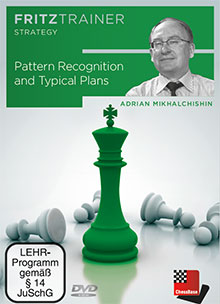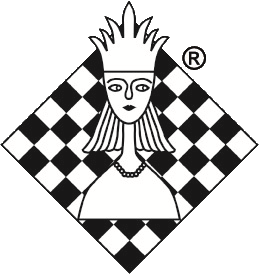
Searching for simple themes and clear guidance
By Matthew Sadler
 The past month has been rather hectic as I started a new job after 2½ years working at the same customer. Whenever I change jobs, opening books get traded in for technical manuals and chess takes a back seat. In this case, it was unfortunate timing as the last weekend of the 4NCL was looming with champions Guildford (my team) and challengers Cheddleton neck-and-neck at the top and heading for a last-round shootout. Not the right time to lose interest in chess! I was looking for a low-effort way to keep my feeling for chess alive, and so I was very happy to spot four recent DVD’s on positional themes: two by Sergei Tiviakov and two by Adrian Mikhalchishin. Looking at the titles, I hoped that I would get some instruction and inspiration across a broad range of topics.
The past month has been rather hectic as I started a new job after 2½ years working at the same customer. Whenever I change jobs, opening books get traded in for technical manuals and chess takes a back seat. In this case, it was unfortunate timing as the last weekend of the 4NCL was looming with champions Guildford (my team) and challengers Cheddleton neck-and-neck at the top and heading for a last-round shootout. Not the right time to lose interest in chess! I was looking for a low-effort way to keep my feeling for chess alive, and so I was very happy to spot four recent DVD’s on positional themes: two by Sergei Tiviakov and two by Adrian Mikhalchishin. Looking at the titles, I hoped that I would get some instruction and inspiration across a broad range of topics.
What do I look for in a DVD? I’ve mentioned before that I mostly watch them slumped on the sofa in a catatonic state after a day’s information overload, so I don’t want anything complicated. No long variations, no enormous digressions, just simple themes, lively examples and clear guidance. In general, these DVDs gave me pretty much what I was looking for!
Sergei Tiviakov’s The Art of Defence and The Art of the Positional Exchange Sacrifice were masterly – a fantastic effort from Sergei. Ever a glutton for punishment, I carried on the positional DVD theme with Pattern Recognition and Typical Plans and Pawn structures you should know, both by Adrian Mikhalchishin. Both DVDs deal with patterns of play in chess and there is much to enjoy in them. There is a wealth of well-chosen examples and Mikhalchishin is an entertaining and lively host. His habit of playing a move on the board and then almost shouting ‘you see!?’ kept me thoroughly entertained all through the many hours of content.
I will have to be churlish though and make one serious complaint about them. It suddenly occurred to me while watching that DVDs don’t have the same quality control as modern chess books. I’ve heard from a number of authors that publishers are blunder-checking the ChessBase files that authors submit and then querying any mistakes they find. Makes sense and it’s a worthwhile effort judging from the quality of the books being published nowadays. It’s much more difficult to do this with DVDs, and I’m afraid that both of Mikhalchishin DVD’s are riddled with tactical mistakes (something that never happens with Tiviakov’s DVDs). I had the strong feeling that Mikhalchishin had selected examples for their thematic content but not necessarily played through the whole game. This leads to some rather strange episodes: for example, in the following game:
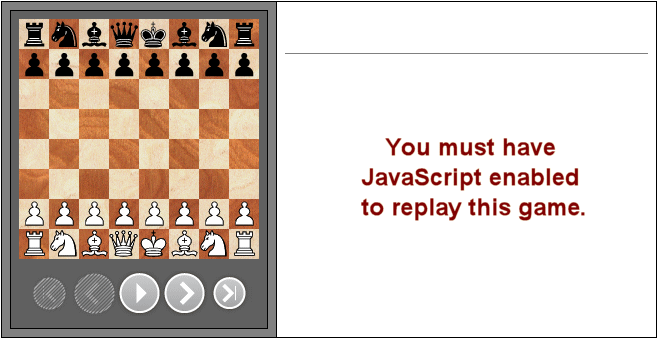
[Event "Wch World Cup (Women)"] [Site "Khanty-Mansiysk"] [Date "2012.11.16"] [Round "2.5"] [White "Cramling, Pia"] [Black "Krush, Irina"] [Result "0-1"] [ECO "D27"] [WhiteElo "2516"] [BlackElo "2470"] [PlyCount "144"] [EventDate "2012.11.11"] [EventType "k.o."] [EventRounds "6"] [EventCountry "RUS"] [SourceTitle "CBM 152"] [Source "ChessBase"] [SourceDate "2013.01.15"] 1. d4 d5 2. Nf3 Nf6 3. c4 dxc4 4. e3 e6 5. Bxc4 c5 6. O-O a6 7. Bd3 Nc6 8. Nc3 cxd4 9. exd4 Nb4 10. Bb1 b6 11. Bg5 Bb7 12. Re1 Be7 13. Ne5 Nfd5 14. Qf3 O-O 15. Qh3 f5 {[#]Mikhalchishin demonstrates the typical idea of ...f5 blocking White’s kingside initiative along the b1-h7 diagonal in IQP positions, which is absolutely fine (I also used this idea in my second 4NCL game of the weekend, so it definitely influenced me!). However, although Black gained an advantage she soon went wrong and ended up equal or a tiny bit worse.} 16. Bd2 Bg5 17. Bxg5 Qxg5 18. Nf3 Qf6 19. Qg3 Rac8 20. Ne5 Qh6 21. Nxd5 Nxd5 22. Bd3 Rfd8 23. Nc4 Nf4 24. Nxb6 Rb8 25. d5 Nxd5 26. Nxd5 Bxd5 27. Bxa6 Rxb2 28. a4 Ra8 29. Bf1 Qd2 30. Red1 {[#]} Qb4 31. Qe5 Qb8 32. Qxb8+ Rbxb8 33. a5 Kf7 34. a6 Ra7 35. Rd2 g5 36. h4 gxh4 37. Rd4 Kg6 38. Rxh4 Rb6 39. Rc1 Rc6 40. Ra1 Rc2 41. Rb4 Kf6 42. f3 h6 43. Rb6 Rc6 44. Rb8 Bc4 45. Bxc4 Rxc4 46. Rb6 {[#] Through inertia, Mikhalchishin keeps on claiming a (big) advantage for Black, even up to this point, where it’s abundantly clear that if anyone is better, it’s White.} Rc2 47. Re1 Re7 48. Ra1 Ra7 49. Re1 Re7 50. Kh2 Ra2 51. Kh3 Ra4 52. Rc1 Re8 53. Rcc6 Re7 54. Rc8 Kf7 55. Ra8 Kf6 56. Rf8+ Kg5 57. Rc8 Kf6 58. Rcc6 Re8 59. Rd6 Re7 60. Rd8 Kf7 61. Rh8 Kg7 62. Ra8 Kf6 63. Rab8 Ra2 64. Rc6 Ra4 65. Rf8+ Kg5 66. Rb6 Ra7 67. Rxe6 R4xa6 68. Re5 Rf6 69. Rg8+ Rg6 70. Rb8 Kf4 71. Rbb5 Rg5 72. Rec5 Rh5# 0-1
It’s really something that should not have been allowed to be released and there are similar episodes in many places. I’d feel bad marking the DVDs too far down because I enjoyed them despite the many mistakes, but just be warned if you do buy them!
The above review appeared in the 4/2017 edition of New in Chess magazine.
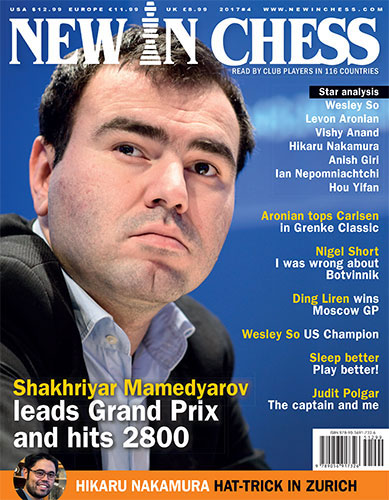
New In Chess (NIC) was founded in 1984 and appears eight times a year. Dirk Jan ten Geuzendam is the editor-in-chief. Besides on-the-spot tournament reports, interviews, chess training and historical articles, the magazine’s hallmark are game comments by the world’s leading players, such as Magnus Carlsen, Vladimir Kramnik, Wesley So, Levon Aronian, Fabiano Caruana, Vishy Anand, Hikaru Nakamura, Maxime Vachier-Lagrave, Anish Giri, Judit Polgar and many others. It is read by club players in 116 countries. A yearly subscription for eight issues costs €79.99 and can be ordered here.
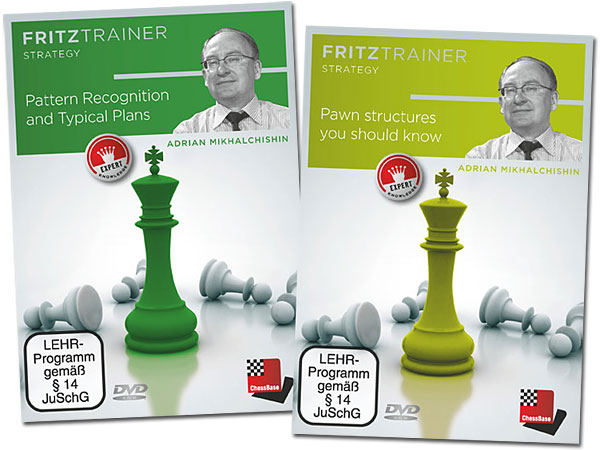













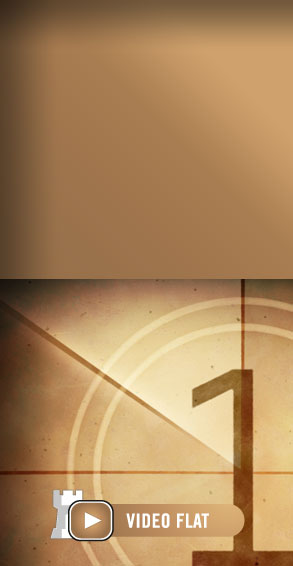
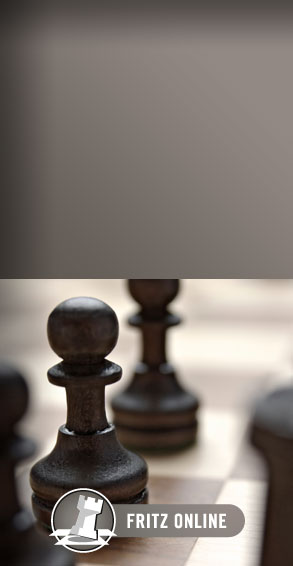
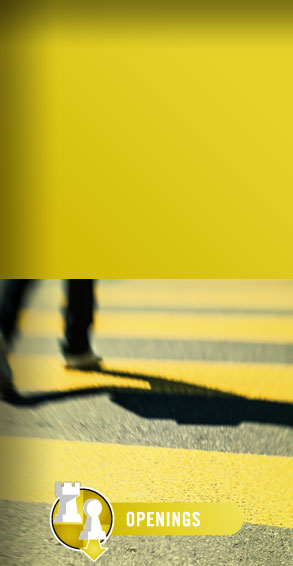
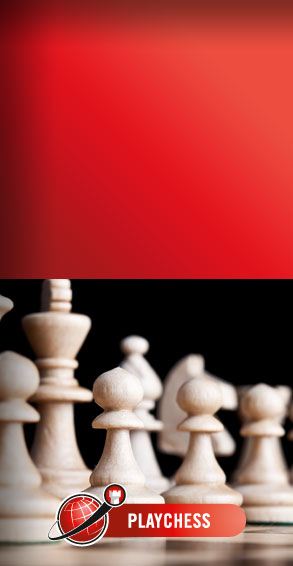

 The past month has been rather hectic as I started a new job after 2½ years working at the same customer. Whenever I change jobs, opening books get traded in for technical manuals and chess takes a back seat. In this case, it was unfortunate timing as the last weekend of the 4NCL was looming with champions Guildford (my team) and challengers Cheddleton neck-and-neck at the top and heading for a last-round shootout. Not the right time to lose interest in chess! I was looking for a low-effort way to keep my feeling for chess alive, and so I was very happy to spot four recent DVD’s on positional themes:
The past month has been rather hectic as I started a new job after 2½ years working at the same customer. Whenever I change jobs, opening books get traded in for technical manuals and chess takes a back seat. In this case, it was unfortunate timing as the last weekend of the 4NCL was looming with champions Guildford (my team) and challengers Cheddleton neck-and-neck at the top and heading for a last-round shootout. Not the right time to lose interest in chess! I was looking for a low-effort way to keep my feeling for chess alive, and so I was very happy to spot four recent DVD’s on positional themes: 
